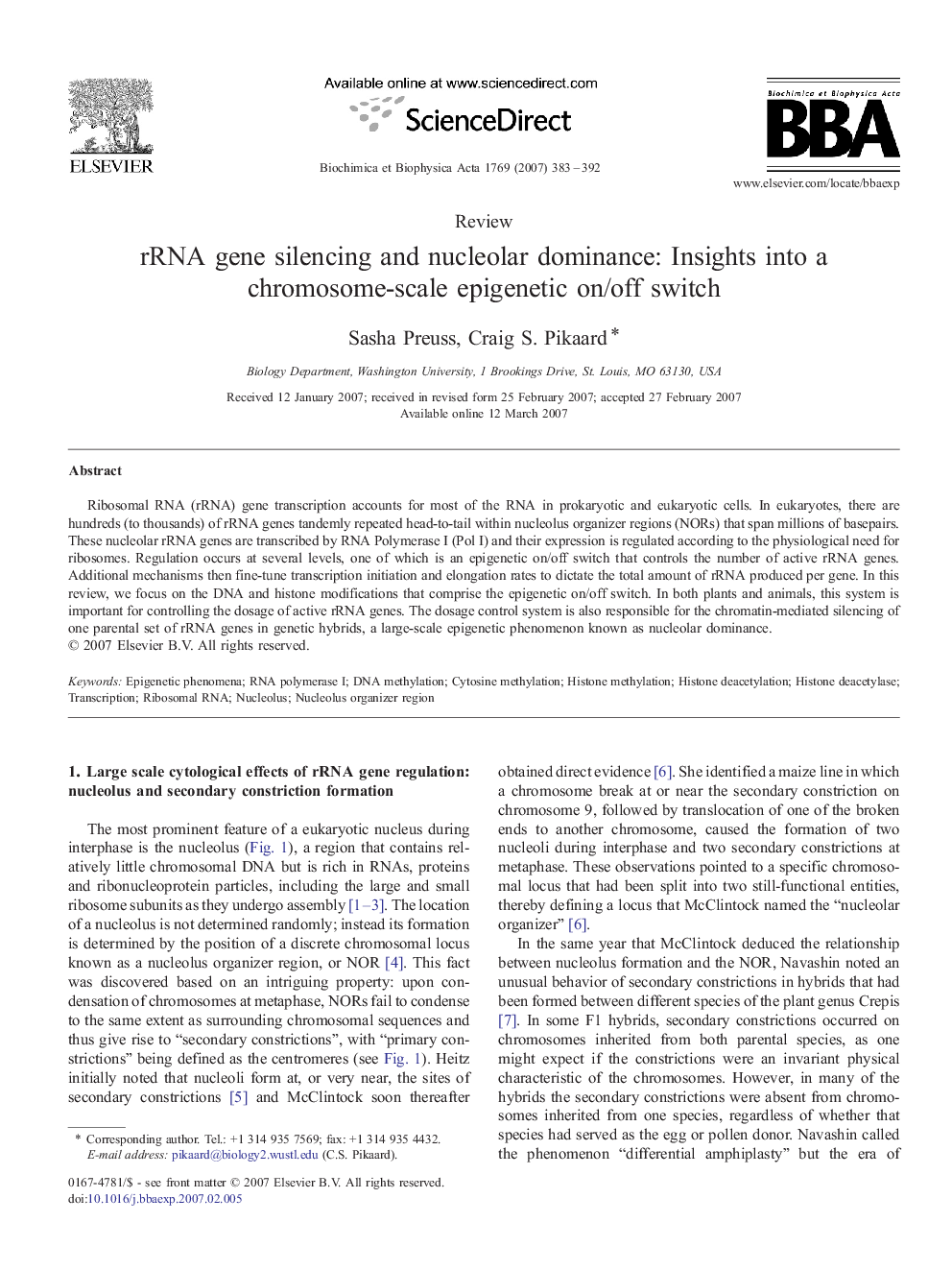| Article ID | Journal | Published Year | Pages | File Type |
|---|---|---|---|---|
| 1947109 | Biochimica et Biophysica Acta (BBA) - Gene Structure and Expression | 2007 | 10 Pages |
Ribosomal RNA (rRNA) gene transcription accounts for most of the RNA in prokaryotic and eukaryotic cells. In eukaryotes, there are hundreds (to thousands) of rRNA genes tandemly repeated head-to-tail within nucleolus organizer regions (NORs) that span millions of basepairs. These nucleolar rRNA genes are transcribed by RNA Polymerase I (Pol I) and their expression is regulated according to the physiological need for ribosomes. Regulation occurs at several levels, one of which is an epigenetic on/off switch that controls the number of active rRNA genes. Additional mechanisms then fine-tune transcription initiation and elongation rates to dictate the total amount of rRNA produced per gene. In this review, we focus on the DNA and histone modifications that comprise the epigenetic on/off switch. In both plants and animals, this system is important for controlling the dosage of active rRNA genes. The dosage control system is also responsible for the chromatin-mediated silencing of one parental set of rRNA genes in genetic hybrids, a large-scale epigenetic phenomenon known as nucleolar dominance.
